As outdoor enthusiasts, choosing a suitable campsite is crucial for our safety and preserving our natural environment. When we venture into the wilderness, we must choose a safe, sustainable campsite that respects nature’s beauty.
By selecting a safe and sustainable campsite, we can minimize our impact on the ecosystem while enjoying a memorable outdoor experience. In this blog post, we will explore essential tips to help you choose a campsite that aligns with these principles.
From considering the terrain and weather conditions to being mindful of fire safety and waste disposal, there are several factors to consider when selecting a campsite. By learning and applying these basic camping skills, we can ensure our safety and contribute to the long-term health of our environment.
So, whether you are a seasoned camper or a beginner looking to embark on your first camping adventure, read on to discover how to choose a safe and sustainable campsite that will enhance your time outdoors.
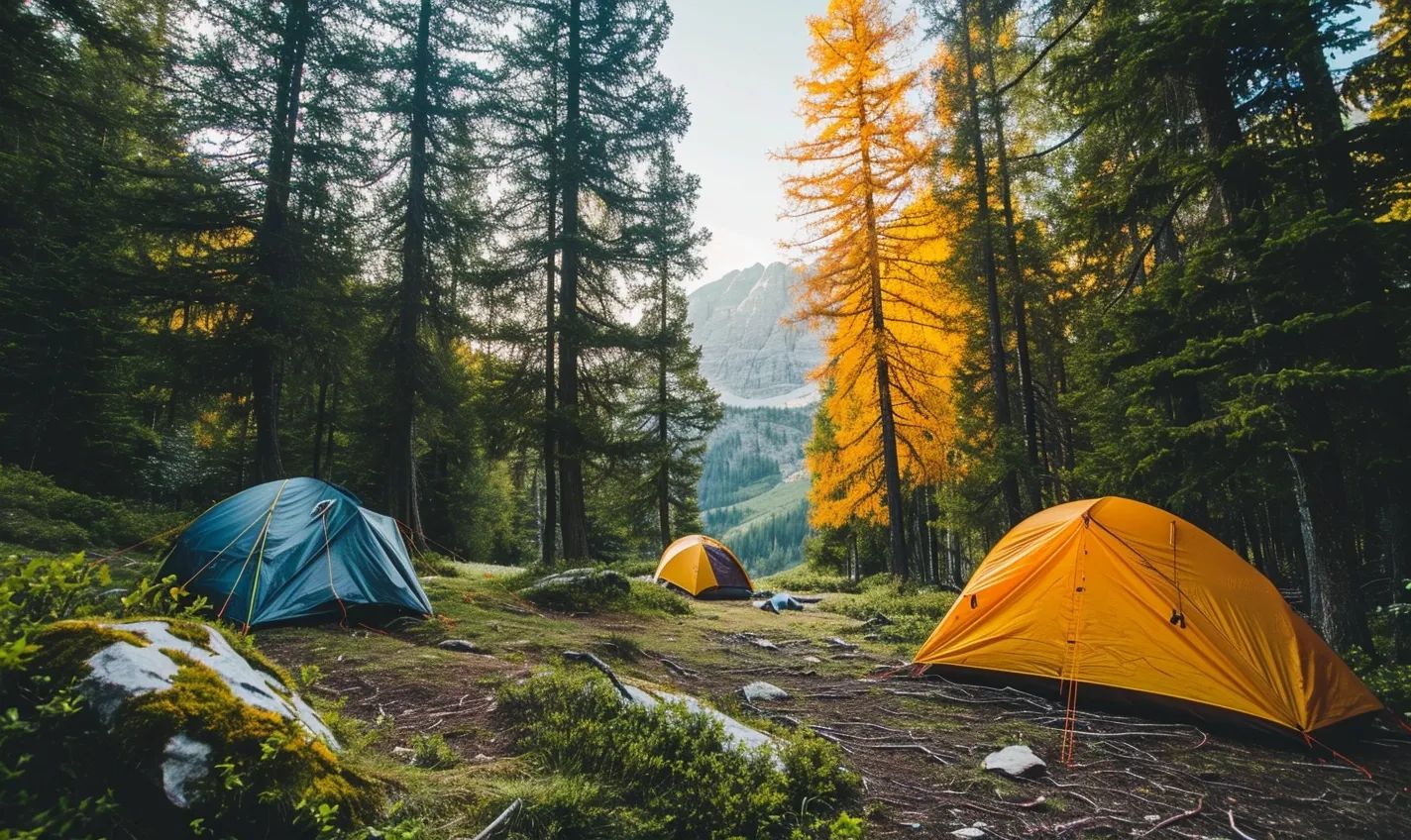
The Importance of Choosing a Safe and Sustainable Campsite
When planning your next camping trip, choosing a suitable campsite is crucial. Not only does it contribute to your overall experience, but it also plays a significant role in ensuring your safety and minimizing your impact on the environment.
Why is it important to choose a safe campsite?
Opting for a safe campsite guarantees that you and your fellow campers remain protected throughout your adventure. Here are a few reasons why selecting a safe campsite is paramount:
- Avoiding hazards: Properly assessing the terrain and surroundings helps identify hazards such as unstable ground, falling trees, or cliffs. Choosing a safe campsite can minimize the risk of accidents and injuries.
- Protecting from extreme weather conditions: Selecting a campsite with natural shelters or good drainage can shield you from unexpected weather changes. This ensures your comfort and reduces the likelihood of weather-related health issues.
- Preventing wildlife encounters: By understanding the wildlife patterns in the area, you can choose a campsite that minimizes the risk of hostile encounters. Keeping a distance from animal habitats helps preserve their natural behavior and ensures your safety.
Why is it important to choose a sustainable campsite?
Being mindful of the environment is essential for every camper. Here’s why selecting a sustainable campsite is crucial:
- Limiting human impact: Picking a campsite in designated areas protects sensitive ecosystems and prevents the degradation of natural spaces. By adhering to Leave No Trace principles, you can minimize your carbon footprint and leave the campsite as you found it.
- Preserving wildlife habitats: Choosing a sustainable campsite away from fragile or protected habitats ensures that local fauna and flora can thrive undisturbed. Respecting their ecosystem contributes to biodiversity preservation.
- Conserving resources: Opting for a campsite with clean water sources reduces the environmental strain. You can help conserve this precious resource during your camping trip by practicing proper water management and purification techniques.
Choosing a safe and sustainable campsite isn’t just about protection and preservation; it’s about being a responsible camper. By making thoughtful choices, you can enjoy your camping experience while positively impacting the environment for future generations.
Researching Potential Campsites: Factors to Consider
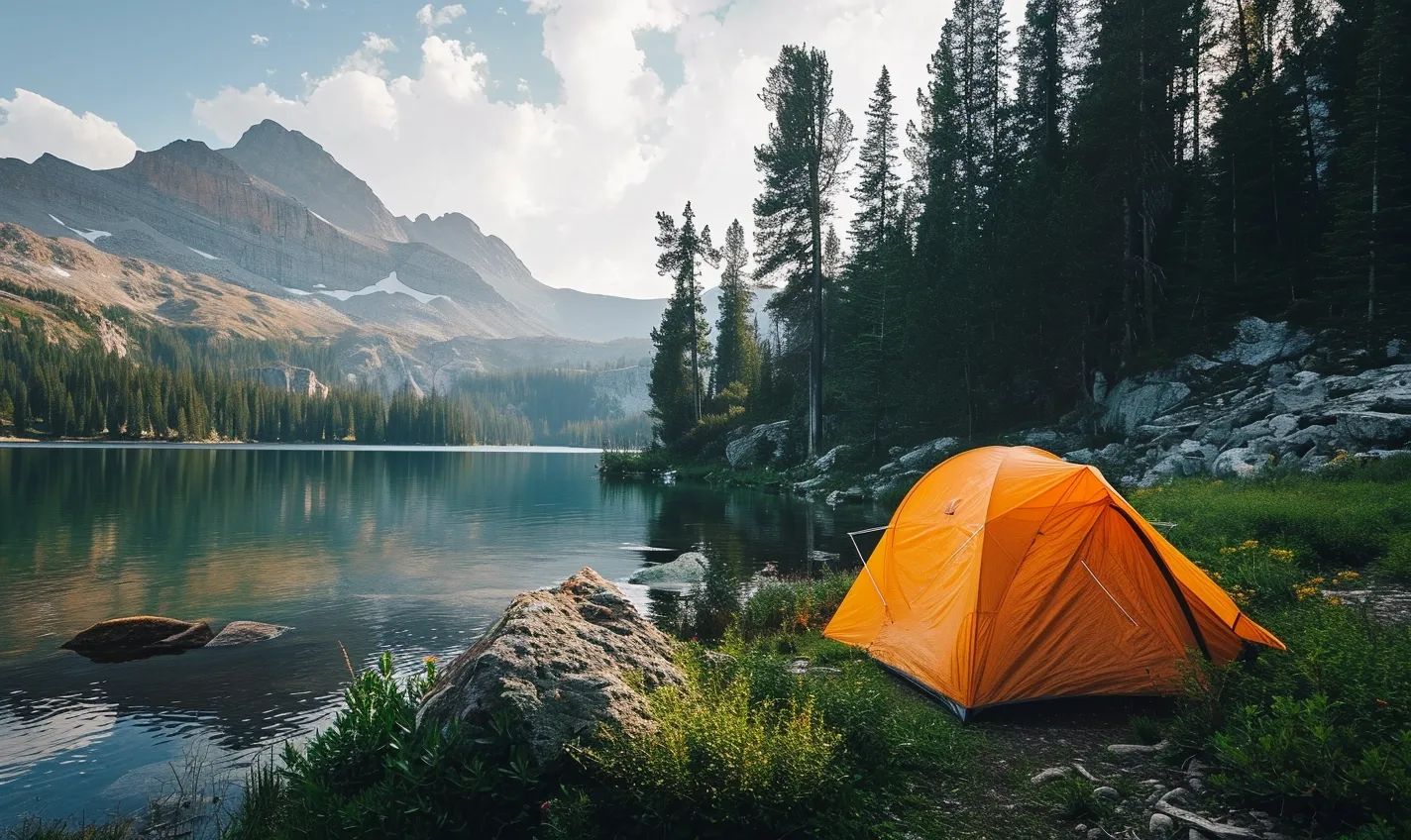
Selecting a campsite is one of the most crucial decisions when planning a camping trip. The campsite you choose will directly impact the safety and sustainability of your outdoor experience. To ensure you make the right choice, it’s essential to consider several factors during your research.
Location and Accessibility
First and foremost, consider the location and accessibility of potential campsites. How far are they from your starting point? Will there be long hikes or rugged terrain to navigate? Remember, the trip should be enjoyable for everyone involved. Look for nearby access to hiking trails, fishing spots, or other activities you’re interested in to maximize the adventure.
Natural Hazards
Research potential natural hazards such as flash floods, wildfire risk, or avalanches. Understanding and preparing for these risks is essential for your safety. Check local weather forecasts and consider the time of year you plan to camp, as these conditions can significantly impact camping safety.
Amenities and Facilities
Depending on your camping preferences, you may want to look for campsites with amenities and facilities such as toilets, showers, or picnic areas. If you prefer a more primitive camping experience, you might want to opt for a location without these modern conveniences.
Environmental Impact
Choose campsites that prioritize sustainability and Leave No Trace principles. Look for sites with designated fire rings, established trails, and adequate restroom facilities. These measures help minimize the impact of camping on the environment, ensuring that future generations can enjoy the same natural beauty.
Local Regulations
Before finalizing your campsite selection, familiarize yourself with local regulations or restrictions. Some areas may have specific rules regarding campfires, hiking off-trail, or bringing pets. Adhering to these guidelines protects the environment and helps maintain a positive relationship between campers and landowners.
User Reviews and Recommendations
While conducting your research, take the time to read user reviews and recommendations. This can provide valuable insights from fellow campers with firsthand experience with the campsites you’re considering. Be sure to evaluate the credibility and relevance of these reviews, paying attention to factors that align with your preferences and requirements.
By carefully considering these factors and doing thorough research, you can choose a safe and sustainable campsite that aligns with your camping goals. Remember, each campsite offers a unique experience, so take your time and consider all the elements to make the most out of your outdoor adventure.
Assessing Safety Risks: Understanding the Terrain and Surroundings
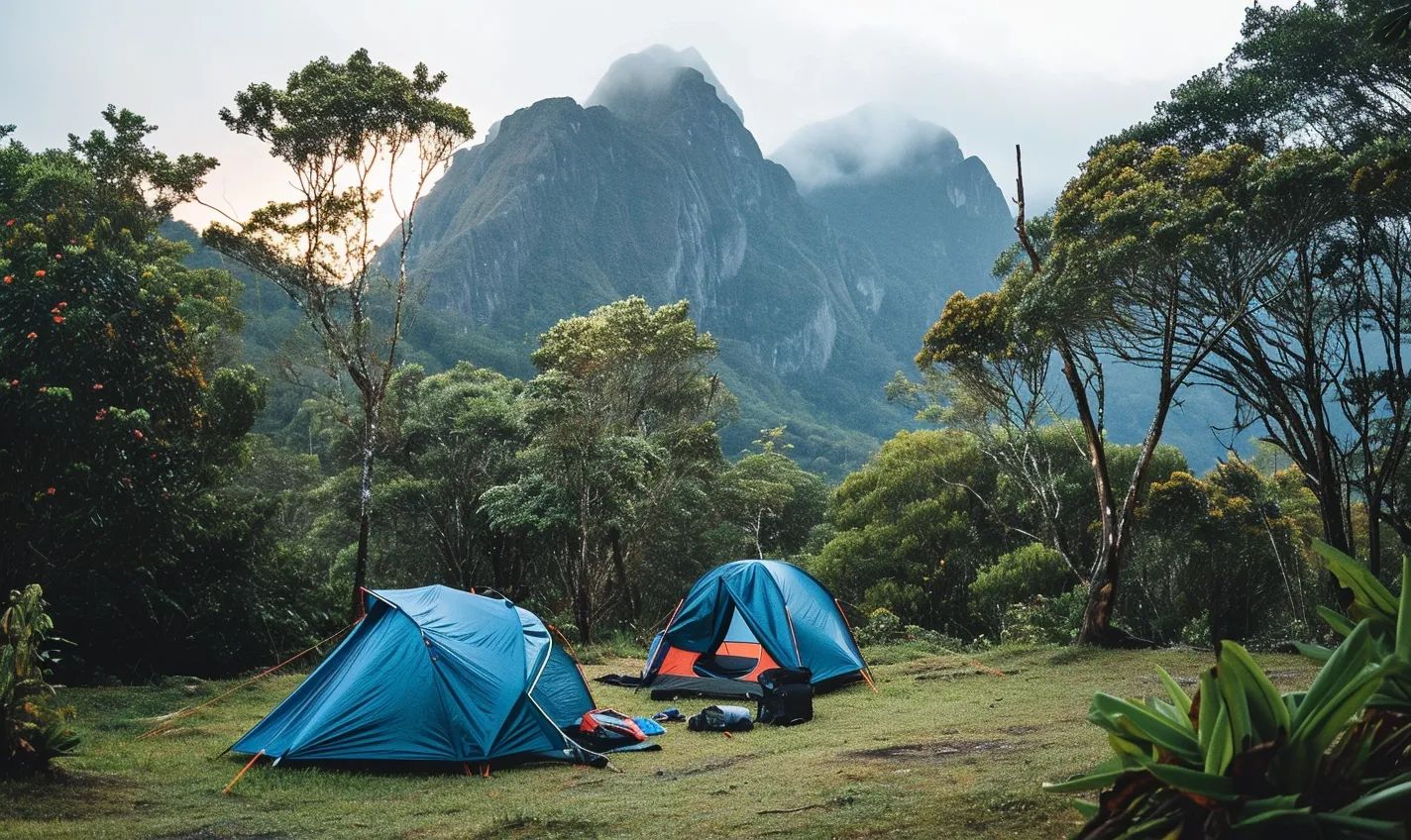
Understanding the terrain and surroundings is crucial when choosing a safe and sustainable campsite. You can ensure a smooth and enjoyable camping experience by assessing safety risks beforehand. Here are some essential tips to help you make an informed decision:
Stay Away from Hazardous Areas
Prioritize your safety by avoiding hazardous areas such as cliffs, unstable slopes, or areas prone to landslides. These can pose serious dangers, especially during inclement weather or dark weather. Look for a flat, stable ground to set up your campsite.
Check for Potential Natural Hazards
Research the area for potential natural hazards like flash flood zones, avalanche-prone areas, or regions with frequent wildlife encounters. Stay informed about local weather patterns and take necessary precautions, such as choosing higher ground or setting up your camp away from water bodies during heavy rains.
Identify Escape Routes
Always have an escape plan in case of emergencies. Familiarize yourself with nearby trails, roads, or open areas, which can provide a safe and quick way to evacuate if needed. This knowledge will give you peace of mind and prepare you for unexpected situations.
Consider Nearby Facilities and Services
Access to certain facilities and services can enhance your camping experience while ensuring your safety. Look for campsites near emergency services, medical facilities, and convenience stores. Additionally, consider if restroom facilities, potable water sources, and waste disposal options are nearby.
Be Mindful of Other Campers
Respecting other campers is ethically sound and contributes to a safe camping environment. Avoid setting up your campsite too close to others, as it can lead to conflicts and increase safety risks. Leave enough space for everyone to feel comfortable and maintain privacy.
By thoroughly assessing safety risks and understanding the terrain and surroundings, you can choose a campsite that meets your needs while prioritizing safety and sustainability. Remember, a little planning and consideration go a long way in ensuring a memorable and incident-free camping experience.
Leave No Trace: Minimizing Environmental Impact
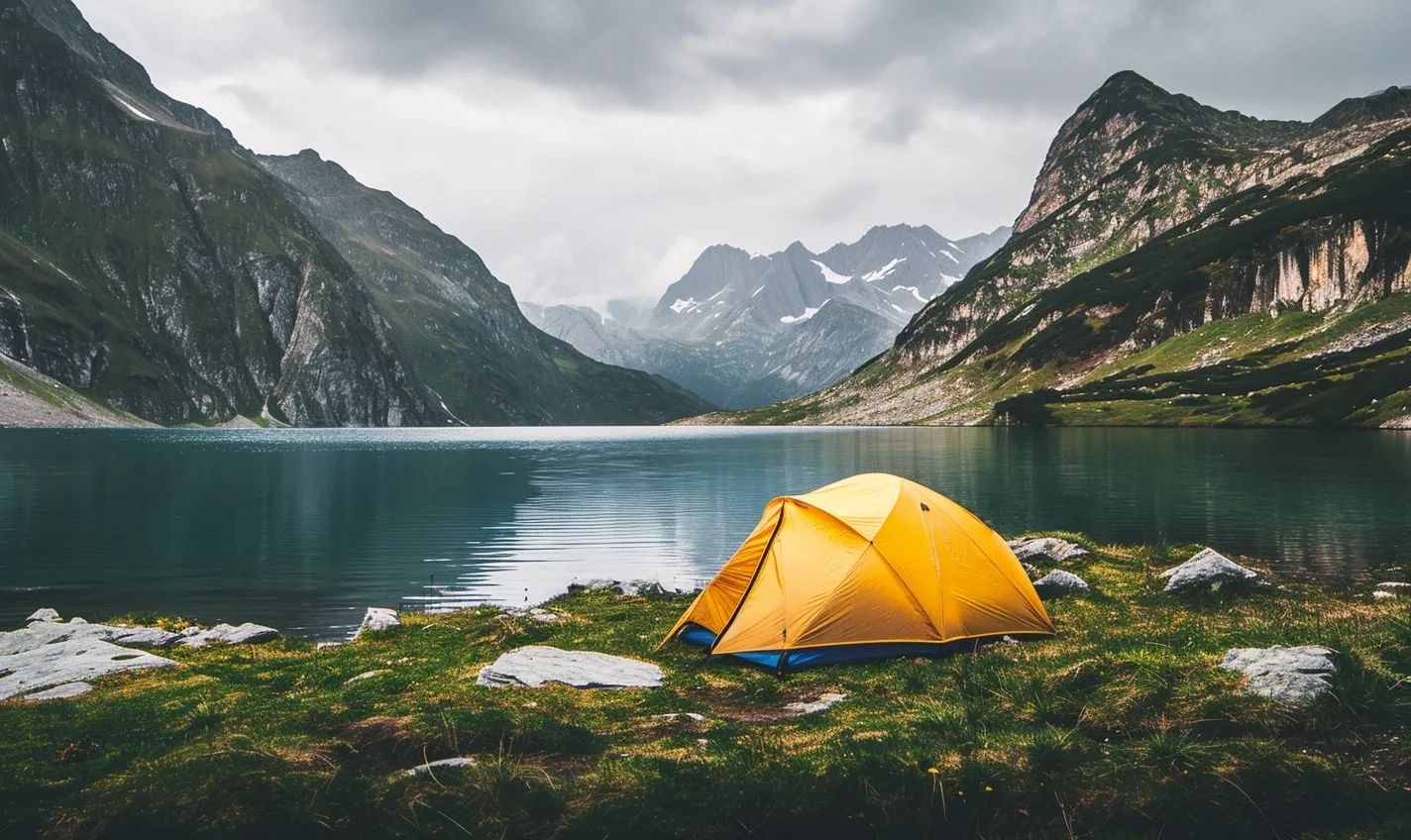
When it comes to camping, choosing a safe and sustainable campsite goes beyond ensuring your safety and comfort. It’s also essential to consider our impact on the environment. By practicing Leave No Trace principles, we can minimize our environmental footprint while still enjoying the beauty of nature.
What Does Leave No Trace Mean?
Leave No Trace guidelines are designed to promote responsible outdoor recreation. The principles aim to minimize the environmental impact and help preserve our camping areas’ natural beauty for future generations.
So, how can you implement Leave No Trace principles when selecting a campsite?
Choose Established Campsites
Look for designated campsites that have been previously used. These areas typically have flat, cleared spaces for tents, fire pits, and sometimes even built-in seating. By using established campsites, you avoid damaging new areas and prevent unnecessary disturbance to the surrounding ecosystem.
Follow Campfire Regulations
If campfires are permitted in the area, use established fire rings or pits rather than creating new ones. Always check local regulations and fire restrictions before planning to have a campfire. Respect any fire bans to avoid starting wildfires and damaging the environment.
Pack Out What You Pack In
Carry out all your trash, including food scraps and biodegradable waste. Leaving garbage behind spoils the area’s natural beauty and can harm wildlife. Animals may be attracted to leftover food, leading to habituation or dependency on human food sources.
Stay on Designated Trails
Stick to established trails and paths to avoid trampling delicate vegetation and habitats. Straying off the path can disrupt the natural balance and harm the ecosystem. Stay on designated trails to prevent erosion and protect fragile plants from trampling.
By choosing a safe and sustainable campsite and following Leave No Trace principles, we can ensure that our camping adventures don’t negatively impact the environment. Remember, it’s our responsibility to preserve nature’s beauty for future generations to enjoy.
Planning Ahead: Reservations and Permits
When choosing a safe and sustainable campsite, one essential aspect that often gets overlooked is planning. By making reservations and obtaining necessary permits, you can ensure a hassle-free camping experience while also contributing to preserving the natural environment. Here are some valuable tips to help you navigate the planning process:
Research Campground Reservations
Start by researching the campgrounds in the area you wish to explore. Many popular camping spots require reservations, especially during peak seasons. Check their websites or contact the local park service to determine if you need to secure a camping spot in advance. Doing so guarantees your place and avoids the disappointment of arriving at a fully booked campground.
Secure Permits for Wilderness Areas
If you plan to venture into wilderness areas or national parks, you may need to obtain permits. These permits help manage visitor traffic, protect sensitive ecosystems, and ensure the safety of both campers and wildlife. Research the specific regulations and permit requirements for the area you intend to visit and make arrangements accordingly.
Check Restrictions and Guidelines
Before making reservations or obtaining permits, knowing any applicable restrictions or guidelines is crucial. Some campsites have specific rules regarding campfires, noise levels, pet policies, and waste disposal. By familiarizing yourself with these guidelines, you can prevent unwanted surprises and camp with peace of mind.
Be Flexible and Have Backup Options
Even with reservations and permits, unforeseen circumstances may sometimes arise. Weather conditions, park closures, or personal emergencies can disrupt your plans. Having backup options and being flexible during your camping adventure is essential. Research nearby campgrounds or alternative locations to ensure you can still enjoy the great outdoors if your original plans change.
Planning by making reservations and obtaining permits is essential to choosing a safe and sustainable campsite. By doing so, you not only ensure your enjoyment and convenience but also contribute to the preservation of these natural spaces. So, be prepared, follow the guidelines, and confidently embark on your camping trip!
Water Sources: Finding and Purifying Water
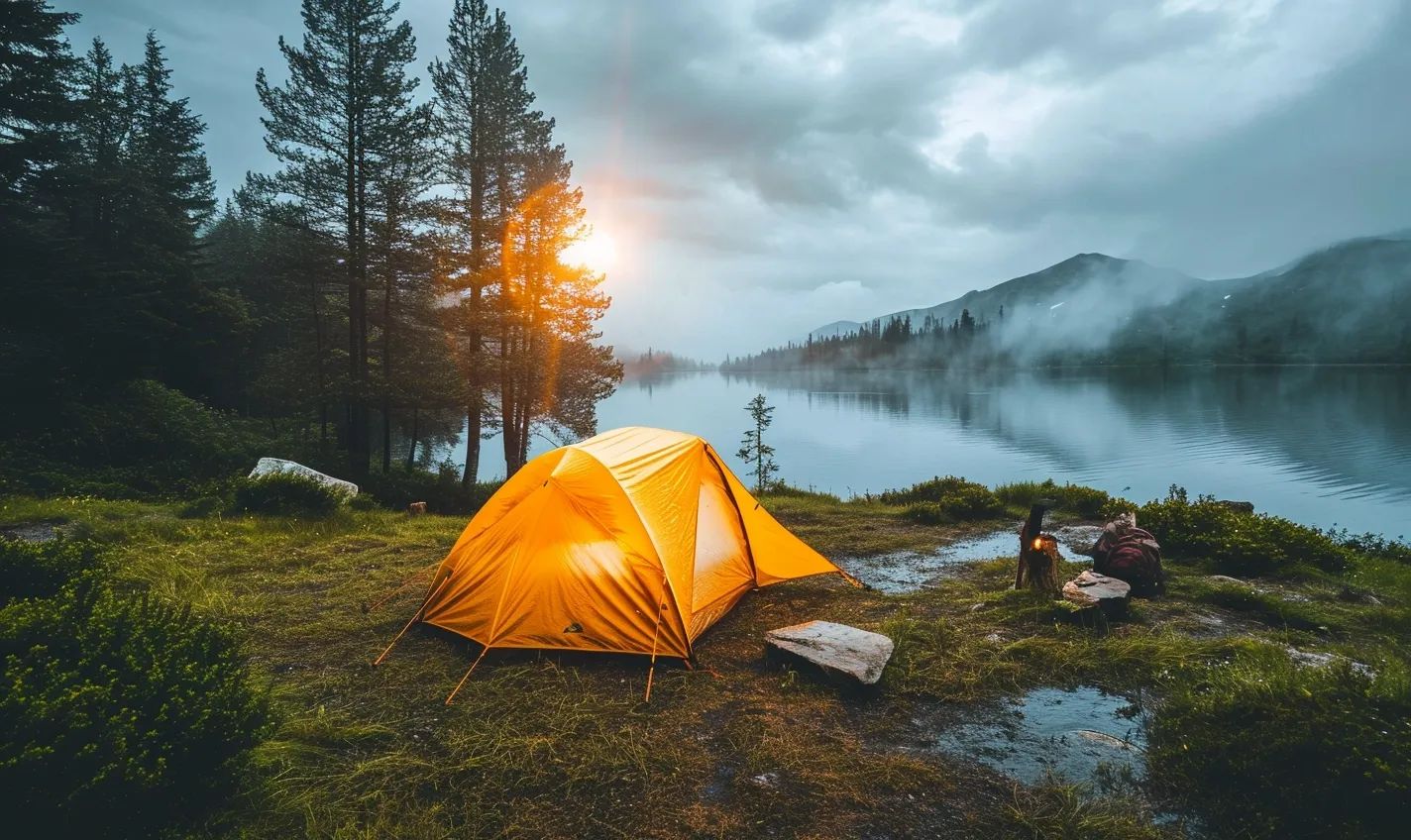
When heading out on a camping trip, one of the most important factors to consider is access to clean water. Water is vital for hydration, cooking, and cleaning in the great outdoors. It is essential to know how to find reliable water sources and ensure they are safe to drink. Here are some tips for finding and purifying water in the wilderness:
Finding Water Sources:
1. Look for flowing water: Find moving rivers, streams, or creeks. Flowing water is generally safer to drink than stagnant water.
2. Check for signs of animal activity: Animals know where water sources are, so if you spot signs of wildlife, there’s a good chance there’s water nearby.
3. Observe the landscape: Look for low-lying areas or depressions where water might accumulate, such as natural springs or seeps.
Purifying Water:
1. Boiling: Water for at least one minute is the most reliable way to kill harmful bacteria and parasites. Carry a lightweight camping stove and pot to make this process easier.
2. Using water treatment tablets: Water purification tablets are a convenient and effective method for killing pathogens. Follow the instructions on the packaging for dosage and contact time.
3. Filtering: Invest in a high-quality water filter to remove impurities and bacteria from the water. Look for a filter that meets the standards set by organizations like the Environmental Protection Agency (EPA).
4. UV sterilization: Portable UV sterilization devices can be a handy tool, as they use ultraviolet light to kill bacteria, viruses, and protozoa. These devices are lightweight and easy to use, making them popular among backpackers.
Remember, always treat any water obtained from natural sources, even if it looks clean. Waterborne diseases can be hazardous, so taking precautions to ensure your safety is crucial.
Understanding how to find and purify water while camping can ensure a safe and enjoyable experience in the wilderness. Having a reliable source of clean water will keep you hydrated, nourished, and ready to tackle all the adventures nature has in store.
Fire Safety: Campfire Guidelines and Restrictions
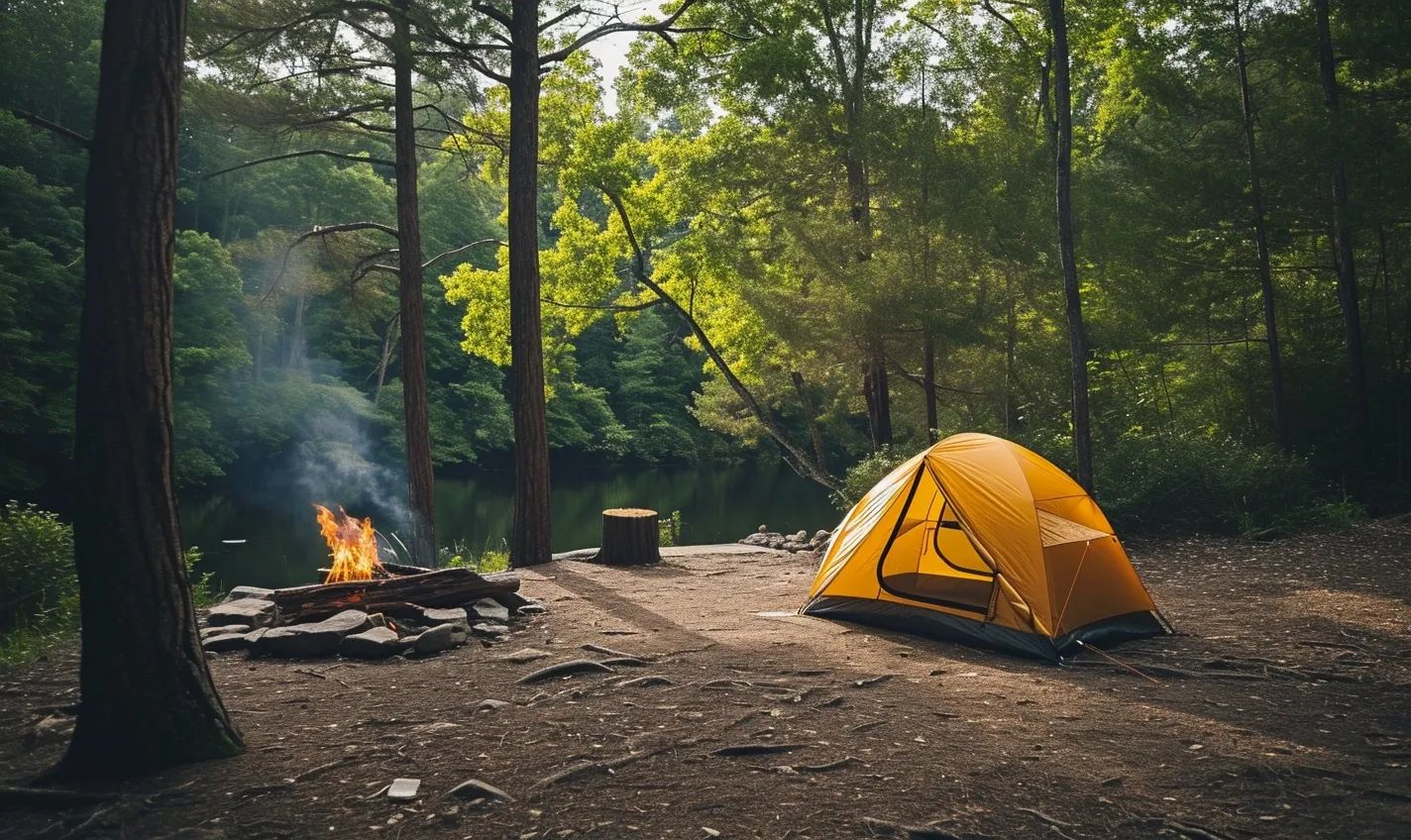
When it comes to camping, a cozy campfire is often an essential part of the experience. It provides warmth, light, and a place for friends and family to gather and share stories. However, it’s crucial to follow campfire guidelines and be aware of any restrictions to ensure the safety of yourself, others, and the environment.
Campfire Guidelines
Before starting a campfire, it’s essential to consider the following guidelines:
- Check the fire regulations and restrictions in the area you plan to camp. Some areas may have specific rules, such as the requirement to bring your firewood or restrictions on the size of the fire.
- Select a safe location for your campfire. Look for a spot away from overhanging branches, dry grass, or flammable materials. Also, ensure that the fire is a safe distance from your tent.
- Clear any debris or dry leaves away from the fire pit to prevent sparks from igniting surrounding vegetation.
- Keep the campfire small and manageable. A more significant fire can quickly get out of control and harm the surrounding environment.
- Never leave your campfire unattended. Always supervise and keep a close eye on it.
- Extinguish the fire completely before leaving the campsite or going to bed. Pour water on the fire, and stir the ashes until they are excellent.
Restrictions and Environmental Impact
Many camping areas have specific restrictions on campfires due to concerns about fire safety and the environmental impact. These restrictions may vary depending on the time of year, weather conditions, and local regulations. It’s essential to be aware of any limits and follow them diligently. Disregarding these rules can lead to fines or even endanger the ecosystem.
By following campfire restrictions, you are also playing a role in practicing sustainable camping. Minimizing the impact your campfire has on the environment ensures that future generations can enjoy the natural beauty of the wilderness. It helps prevent wildfires, protects wildlife habitats, and preserves pristine landscapes for everyone’s enjoyment.
Before heading out on your camping trip, do thorough research to understand the specific regulations and guidelines for campfires in the area. Stay informed and be a responsible camper by respecting these rules and doing your part to preserve the beauty of our natural surroundings.
Wildlife Awareness: Protecting Yourself and Local Fauna

When embarking on a camping trip, being mindful of the wildlife sharing the area with you is essential. Not only does this ensure your safety, but it also helps protect the local fauna and maintain the ecosystem’s delicate balance. Here are some critical tips for wildlife awareness:
Stay Informed:
Before heading out to your campsite, research the local wildlife in the area. Find out what potential hazards, such as bears or venomous snakes, may exist. Understanding the behaviors of different animals can help you reduce risks and be better prepared.
Store Food Properly:
One of the most important aspects of wildlife awareness is proper food storage. Animals are attracted to the smell of food, and leaving it unsecured at your campsite can result in unwanted encounters. Invest in bear-resistant containers or hang your food in a bear bag at a safe distance from your sleeping area.
Keep a Clean Campsite:
Always maintain a tidy campsite, free from any food scraps or trash. Dispose of waste properly using designated trash bins or packing it with you. This prevents wildlife from being drawn to your camp and helps reduce your impact on the environment.
Observe from a Distance:
While spotting wildlife during your camping trip can be exciting, keeping a respectful distance is essential. Never approach or feed wild animals, as this can disrupt their natural behavior and potentially put you in danger.
Respect Wildlife Habitat:
Avoid venturing off-trail or into areas designated as wildlife habitats. These areas are vital for the well-being and survival of local fauna. By respecting their space, you contribute to the long-term preservation of their natural environment.
In conclusion, choosing a safe and sustainable campsite involves considering the safety risks for yourself and the well-being of the local wildlife. Educating yourself about the animals in the area and taking appropriate precautions will ensure a harmonious coexistence with nature during your camping adventures. Responsible camping means leaving no trace and being a considerate guest in nature’s home.
Sources:
– https://www.rei.com/learn/expert-advice/camping-wild-animal-safety.html
– https://www.nps.gov/articles/wildlife-safety.htm
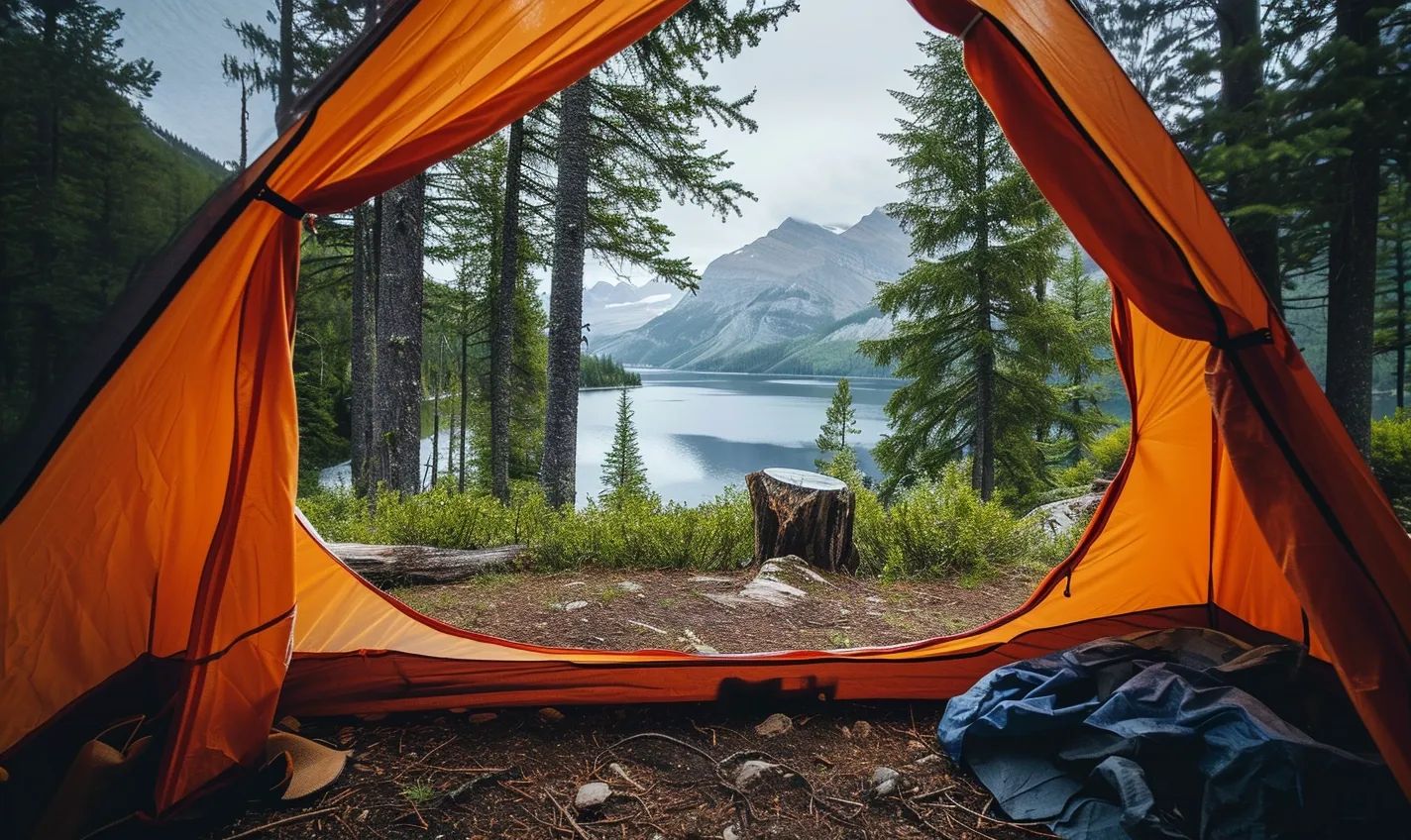
Conclusion
In conclusion, choosing a safe and sustainable campsite is essential for a successful outdoor adventure. By following the tips outlined in this article, you can ensure the well-being of both yourself and the environment.
Remember to carefully research potential campsites ahead of time, considering the safety measures in place, proximity to amenities, and any specific regulations that may apply. Look for sites with sustainable features, such as recycling facilities and eco-friendly practices.
Once at the campsite, practice leave-no-trace principles and respect the natural surroundings. Keep the campsite clean, dispose of waste properly, and avoid damaging plants and wildlife.
By being responsible and mindful campers, we can enjoy the great outdoors while minimizing our environmental impact. So, choose a safe and sustainable campsite and enjoy a memorable camping experience!
Frequently Asked Questions (FAQs)
Q: Why is it important to choose a safe and sustainable campsite?
A: Choosing a safe and sustainable campsite ensures the well-being of both campers and the environment. It helps minimize the impact on nature and promotes responsible camping practices.
Q: How can I determine if a campsite is safe?
A: To determine if a campsite is safe, look for level ground, assess the surrounding area for potential hazards such as dead trees or unstable slopes, and check for accessibility to emergency services if needed.
Q: What does it mean for a campsite to be sustainable?
A: A sustainable campsite means minimizing the impact on the environment. It involves using existing campsites rather than creating new ones, practicing Leave No Trace principles, and properly disposing of waste.
Q: How can I find sustainable campsites?
A: Look for established campgrounds with proper waste disposal facilities and recycling options and promote eco-friendly practices. Additionally, consider contacting local park authorities or conservation organizations for recommendations on sustainable campsites in your area.
Q: What should I consider when selecting a safe campsite?
A: When selecting a safe campsite, consider factors such as visibility and proximity to water sources, natural hazards like cliffs or falling trees, potential flood zones, and the availability of emergency services.
Q: How can I minimize my impact on the campsite’s environment?
A: Minimize your impact by following Leave No Trace principles, such as packing out all trash, using designated fire pits or stoves, avoiding the destruction of vegetation, and not disturbing wildlife habitats.







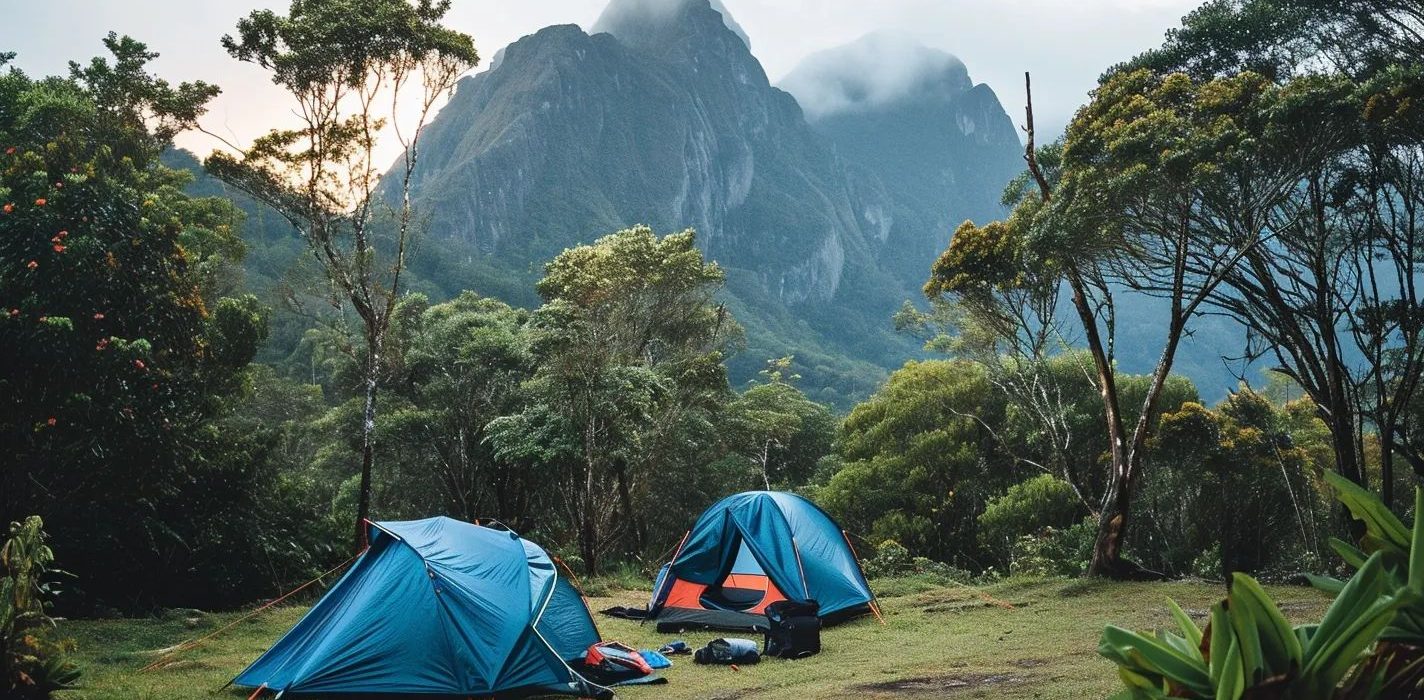


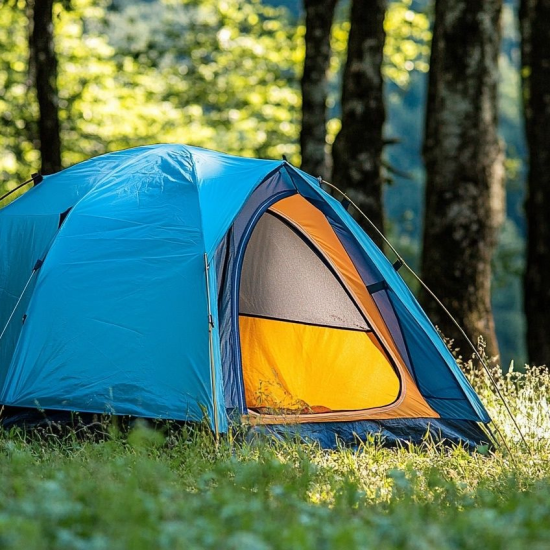
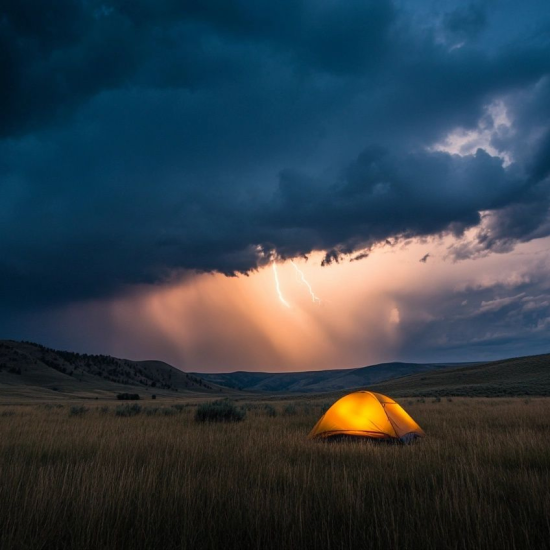
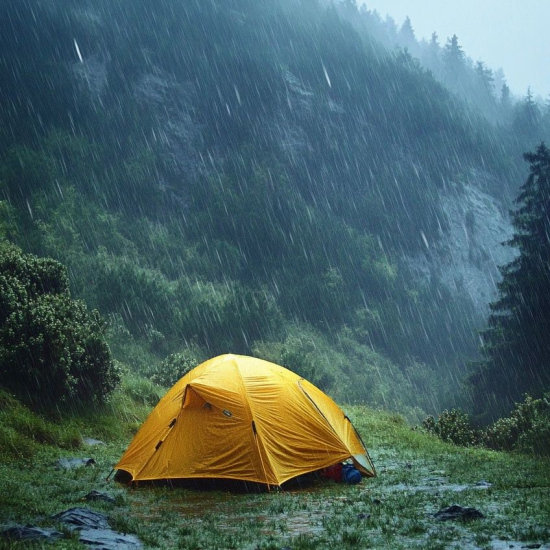
No Comment! Be the first one.